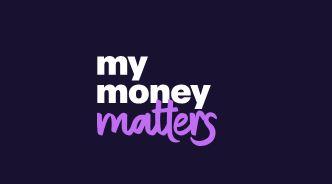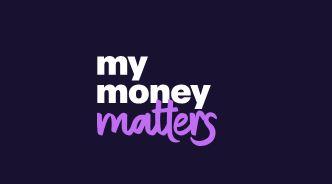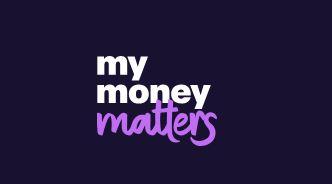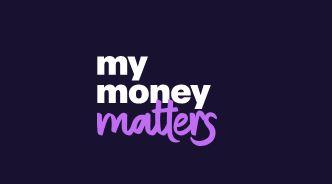Understanding Mortgage Interest Rates
There’s more to a mortgage than just the monthly repayments. Learn about the different types of mortgages, how much interest you'll pay, and what happens if your rate changes. This will help you find the best mortgage for you.
What are the different types of mortgage interest rates?
When you get a loan to buy your home, you are charged interest on what you borrow. This is called the ‘mortgage rate’.
There are two main types of mortgages:
- Fixed rate where the interest stays the same for a set number of years, usually between 2 and 10 years.
- Variable rate where the interest can change (includes tracker and discounted-rate mortgages).
Check what mortgage interest rate you can afford
It’s a good idea to make sure you could afford the mortgage repayments if your interest rate changes.
Fixed-rate mortgage
With a fixed-rate mortgage the interest rate stays the same for the length of the deal.
You’ll see them called a ‘two-year fix’, ‘five-year fix’, or even ‘ten-year fix’. Your monthly repayments will stay the same during this time, no matter what happens in the market.
But when the deal ends, the interest rate changes to the lender's standard variable rate (SVR) unless you get a new deal or remortgage. The SVR is often higher so it’s likely your monthly payments will increase.
Pros and cons of fixed-rate mortgages
Pros
Your monthly payments stay the same each month, making it easier to budget.
You’re not affected by rising interest rates during your fixed term.
You can often pay extra on your mortgage, up to 10% a year without a fee.
Cons
Fixed rates are usually a bit higher than variable rates.
If interest rates go down, you won’t save money.
There might be charges if you want to leave the deal early. You’re usually tied in for the fixed period.
What is a variable-rate mortgage?
A variable-rate is one where the interest you pay on your mortgage each month can go up or down, usually in line with the Bank of England base rate.
This means some months you pay more, and some months you pay less. This can be risky as you could find it hard to budget.
These types of mortgages include tracker, standard variable and discounted variable.
What is the Bank of England base rate now?
The base rate is currently 4%.
Tracker-rate mortgage
Tracker rates follow another interest rate, usually the Bank of England’s base rate plus a few percent.
For example, if the base rate goes up by 0.5%, your rate goes up by 0.5%.
They usually last for two to five years. Some lenders offer trackers that last for the whole mortgage term, or until you switch to another deal.
Remember to check the small print - make sure your lender can’t raise rates when the rate your mortgage is linked to hasn’t changed. It’s rare, but it has happened before.
Pros and cons of tracker-rate mortgages
Pros
If the rate it tracks goes down, your mortgage payments go down too.
You’re not usually tied in, so you can switch deals or providers early.
There are usually fewer or no limits on making extra payments.
You can often switch early without a fee, but always check with your lender.
Cons
If the rate it’s tracking goes up, your mortgage payments go up too.
Standard variable rate mortgage (SVR)
The standard variable rate (SVR) is the interest rate a mortgage lender uses for their standard mortgage loan. The rate can change at any time.
Each lender sets their own SVR, and the rate is usually higher than their other mortgage products.
Some are up to 5% higher than the Bank of England base rate, so this can make standard variable rates an expensive option.
If you’re moved over to your mortgage lender’s SVR, you can usually stay on it until your mortgage ends, unless you arrange a new deal with them or another lender.
Pros and cons of SVR mortgages
Pros
- Freedom – you can leave the deal at any time.
- There’s usually no limit on making extra payments towards your mortgage (overpaying), even in large amounts.
Cons
- The interest rate can change at any time.
- The rate is usually higher than other mortgage deals.
Discounted-rate mortgage
This is a discount on the lender’s SVR and only applies for a set time, typically two or three years.
Different lenders have different rates, so it pays to shop around - a bigger discount doesn’t always mean a lower rate.
Example of discounted rate
Two banks have discount rates:
- Bank A has a 2% discount off an SVR of 6% (so you’ll pay 4%)
- Bank B has a 1.5% discount off an SVR of 5% (so you’ll pay 3.5%).
Although the discount is larger for Bank A, Bank B will be the cheaper option.
Pros and cons of discounted-rate mortgages
Pros
- Cost – the rate starts lower, so your monthly payments are smaller.
- If the lender cuts its SVR, your payments will go down too.
Cons
- Hard to budget as the lender can raise the rate whenever they want.
- If the Bank of England’s base rate goes up, your discount rate might go up too.
- You might have to pay a fee if you leave before the discount period ends.
Offset mortgage
An offset mortgage links your mortgage to a savings account. This means you won’t pay interest on part of your mortgage, equal to how much is in your savings account.
Usually, your linked savings account won’t earn interest. Instead, you’re paying less interest on your mortgage.
Offset mortgage example
- You have a £200,000 offset mortgage at 3% interest
- You also have £10,000 savings in an offset account.
You’d only pay interest on £190,000. Your £10,000 in savings is offset, so you don’t need to pay the 3% interest for this amount.
Pros and cons of an offset mortgage
Pros
- You might pay your mortgage off quicker than a standard mortgage.
- You can still withdraw your savings if you need to.
Cons
- You won’t earn interest on your savings.
- Limited access to discounted rate deals.
- You could earn better interest on your savings elsewhere.
Current account mortgage
This is a type of offset mortgage. With this deal, you won’t be charged interest on the balance you have in your current account.
So, if you have a mortgage of £150,000 and £2,000 in your current account, you’ll pay interest on the £148,000 remaining.
The amount of interest you’re paying will rise and fall depending on the amount in your current account each day.
Cashback mortgage
With a cashback mortgage, you’re given some cash when you take out your mortgage. This could either be:
- a percentage of what you’re borrowing, or
- a fixed amount of money.
You’ll get the cashback once the sale is complete. This can be used to help with costs like furniture and repairs to your new home.
Cashback mortgages usually charge a higher interest rate than other mortgages. Compare your deal with other mortgages to make sure you’re happy with the overall cost.
Remortgaging or ‘porting’ your mortgage
Most mortgages are now ‘portable,’ meaning you can take them with you when you move to a new home.
But ‘porting’ your deal is still treated like applying for a new mortgage, so you’ll need to meet the lender’s affordability checks to be approved.
If you don’t pass the checks, you might need to find a new lender. This could mean paying a fee for leaving your current mortgage early.
When you ‘port’ a mortgage, only the amount you owe stays on the current fixed or discounted deal. You’ll have to get a new mortgage deal for any extra money you need, and the terms might be different to your old deal.
If you think you’ll move before the new deal ends, consider deals with low or no early repayment charges. This gives you more freedom to look for better options when you move.
How to compare mortgage deals
When comparing fixed, variable or tracker mortgages check all the figures that come with the deal to make sure it’s right for you.
Remember to look out for admin costs as well as any early exit penalties.
Compare more than just the rate
Always compare the Annual Percentage Rate of Charge (APRC) to see which deal is best.
The APRC tells you the yearly total cost of your mortgage, including all fees and charges, assuming you keep the mortgage for its full term.
Lenders must state the APRC on a mortgage deal, and it’s also shown on comparison websites.
Make sure you compare deals to find one that fits your budget.
For example, if you pay an upfront fee, you might get a lower interest rate, but it might not save you money overall. If you choose a mortgage without a fee, you might face a higher rate.
Mortgages with flexible features
Some conventional mortgages offer flexible features:
The option to overpay
Many mortgages allow you to pay more than your normal monthly payment so you can reduce your debt quicker.
Check if there’s a limit on how much you can overpay each year. It’s often 10% of the mortgage.
Paying back your mortgage before the end of its term might seem like a great idea, but you could be charged an early repayment fee. Be sure to check the terms of your mortgage agreement.
The option to take payment holidays
With some mortgages you might be allowed to take a payment holiday. This means you don’t have to make any payments for a limited period.
Underpaying
If you've overpaid in the past, a lender might allow you to pay less than your normal monthly repayment if your financial circumstances change.
If you underpay, it’ll take you longer to pay off your mortgage and you’ll pay more interest over the course of the loan.
Ask these questions when choosing a mortgage
- Do you want fixed monthly payments, or do you want to benefit if interest rates fall?
- Do you want to add some or all of your mortgage fees into your mortgage?
- How long is the fixed term?
- Do you want the flexibility to overpay, underpay or take payment breaks?
- Do you want to be able to move lenders, or remortgage, when you want?
- Can you afford your repayments if the interest increases above a certain rate?
- Do you want to use your savings to help pay off your mortgage sooner?
Speak to a mortgage broker or adviser
Independent mortgage advisers can search the market on your behalf and recommend the best deal.
Discover the right people to talk to about homes and mortgages in our guide Buying and selling your home: find a professional.
Use mortgage comparison websites
Comparison websites can help you research what deals are available, and help you see the type of product and features lenders offer.
Search online or try these websites to get started:
- Moneyfacts
- MoneySavingExpert
- MoneySuperMarket
They won’t all give you the same results, so make sure you use more than one before deciding.







































